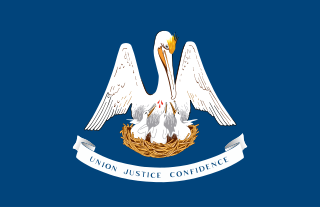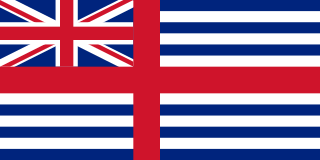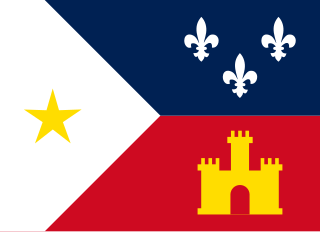Henri Peyroux de la Coudrenière (1743–18??), also spelled Coudrenaire, was a French politician and author who is perhaps best known for his scheme to transport the exiled Acadians from France to Louisiana, from which the people known as Cajuns are descended.

The Acadians are the descendants of French colonists who settled in Acadia during the 17th and 18th centuries, some of whom are also descended from the Indigenous peoples of the region. The colony was located in what is now Eastern Canada's Maritime provinces, as well as part of Quebec, and present-day Maine to the Kennebec River. Acadia was a distinctly separate colony of New France. It was geographically and administratively separate from the French colony of Canada. As a result, the Acadians and Québécois developed two distinct histories and cultures. They also developed a slightly different French language. France has one official language and to accomplish this they have an administration in charge of the language. Since the Acadians were separated from this council, their French language evolved independently, and Acadians retain several elements of 17th-century French that have disappeared in France. The settlers whose descendants became Acadians came from many areas in France, but especially regions such as Île-de-France, Normandy, Brittany, Poitou and Aquitaine. Acadian family names have come from many areas in France. For example, the Maillets are from Paris; the LeBlancs of Normandy; the surname Melançon is from Brittany, and those with the surnames Bastarache and Basque came from Aquitaine.

France, officially the French Republic, is a country whose territory consists of metropolitan France in Western Europe and several overseas regions and territories. The metropolitan area of France extends from the Mediterranean Sea to the English Channel and the North Sea, and from the Rhine to the Atlantic Ocean. It is bordered by Belgium, Luxembourg and Germany to the northeast, Switzerland and Italy to the east, and Andorra and Spain to the south. The overseas territories include French Guiana in South America and several islands in the Atlantic, Pacific and Indian oceans. The country's 18 integral regions span a combined area of 643,801 square kilometres (248,573 sq mi) and a total population of 67.3 million. France, a sovereign state, is a unitary semi-presidential republic with its capital in Paris, the country's largest city and main cultural and commercial centre. Other major urban areas include Lyon, Marseille, Toulouse, Bordeaux, Lille and Nice.

Louisiana is a state in the Deep South region of the South Central United States. It is the 31st most extensive and the 25th most populous of the 50 United States. Louisiana is bordered by the state of Texas to the west, Arkansas to the north, Mississippi to the east, and the Gulf of Mexico to the south. A large part of its eastern boundary is demarcated by the Mississippi River. Louisiana is the only U.S. state with political subdivisions termed parishes, which are equivalent to counties. The state's capital is Baton Rouge, and its largest city is New Orleans.
Henri Peyroux de la Coudrenière was born in Mortagne-sur-Sèvre, Poitou, France to Charles Peyroux, an apothecary and surgeon, and Marguerite Suzanne Joudad.

Mortagne-sur-Sèvre is a commune in the Vendée department in the Pays de la Loire region in western France. The commune was formed by the consolidation Mortagne-sur-Sèvre, Évrunes and Saint-Hilaire-de-Mortagne in 1964.

Poitou, in Poitevin: Poetou, was a province of west-central France whose capital city was Poitiers.
Peyroux conceived the idea of resettling the exiled Acadians in Spanish Louisiana. Securing a commission and pension from Spain, he took the Acadian exile, Olivier Terrio, as a business partner, and together they worked with French and Spanish officials, as well as with the Acadian exiles, to coordinate the resettlement project. Complications arose when, for instance, Peyroux was arrested by French officials, as a secret agent of Spain; in fact, the arrest had been arranged by French merchants who did not wish the Acadian exiles to depart, without paying off their mounting debts. After numerous financial and bureaucratic setbacks, approximately 1,600 Acadian exiles sailed for Louisiana between May and October 1785.

Louisiana was the name of an administrative district of the Viceroyalty of New Spain from 1763 to 1801 that consisted of territory west of the Mississippi River basin, plus New Orleans. Spain acquired the territory from France, which had named it La Louisiane in honor of King Louis XIV in 1682. It is sometimes known as Spanish Louisiana. The district was retroceded to France, under the terms of the Third Treaty of San Ildefonso (1800) and the Treaty of Aranjuez (1801). In 1802, King Charles IV of Spain published a royal bill on 14 October, effecting the transfer and outlining the conditions.

Spain, officially the Kingdom of Spain, is a country mostly located in Europe. Its continental European territory is situated on the Iberian Peninsula. Its territory also includes two archipelagoes: the Canary Islands off the coast of Africa, and the Balearic Islands in the Mediterranean Sea. The African enclaves of Ceuta, Melilla, and Peñón de Vélez de la Gomera make Spain the only European country to have a physical border with an African country (Morocco). Several small islands in the Alboran Sea are also part of Spanish territory. The country's mainland is bordered to the south and east by the Mediterranean Sea except for a small land boundary with Gibraltar; to the north and northeast by France, Andorra, and the Bay of Biscay; and to the west and northwest by Portugal and the Atlantic Ocean.
Henri Peyroux also went to Louisiana, where he benefited from his commissions as a captain in the Spanish Army and a commandant of the post at Sainte-Geneviève in Spanish Illinois, now Missouri. Having succeeded in resettling the French-exiled Acadians, Peyroux betrayed his partner, Terrio, refusing to compensate him for his services.

The Spanish Army is the terrestrial army of the Spanish Armed Forces responsible for land-based military operations. It is one of the oldest active armies — dating back to the late 15th century.
Commandant is a title often given to the officer in charge of a military training establishment or academy. This usage is common in English-speaking nations. In some countries it may be a military or police rank. It is also often used to refer to the commander of a military prison or prison camp.

Ste. Genevieve is a city in Ste. Genevieve Township and is the county seat of Ste. Genevieve County, Missouri, United States. The population was 4,410 at the 2010 census. Founded in 1735 by French Canadian colonists and settlers from east of the river, it was the first organized European settlement west of the Mississippi River in present-day Missouri.
For these reasons, Henri Peyroux de la Coudrenière is viewed by some, not so much as a benefactor of the Acadian people but as an opportunistic colonial entrepreneur.
Around 1784–85, Peyroux wrote a "memoir on the advantages to be gained for the Spanish crown by the settlement of Van Dieman's Land. [1] After receiving no response from the Spanish government, Peyroux proposed it to the French government, as "Mémoire sur les avantages qui résulteraient d'une colonie puissante à la terre de Diémen". [2]









